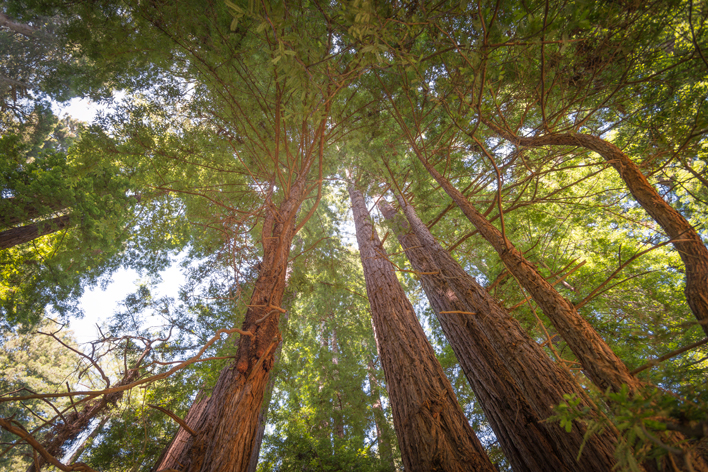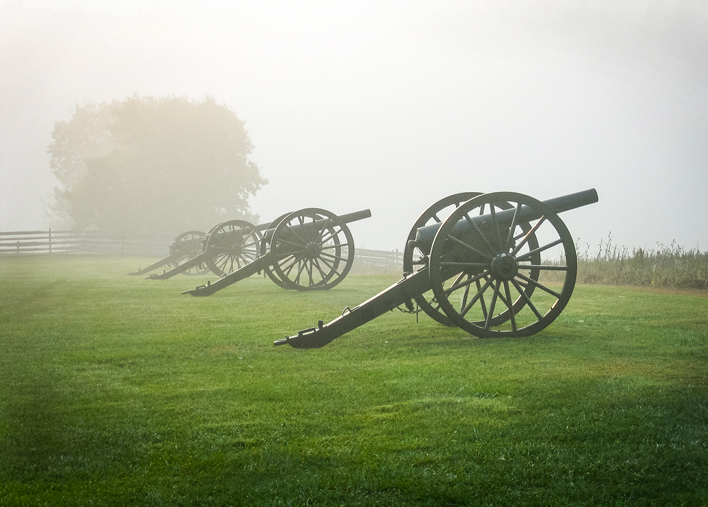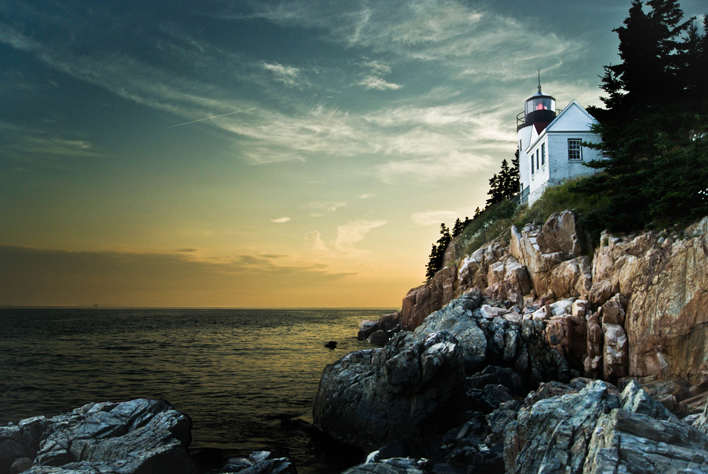When you think of parks, whether Yosemite or your corner playground, you probably think of them as quintessentially public institutions—as the Ken Burns documentary puts it, “America’s best idea.” And while parks are indeed public institutions, a great many owe their existence, growth, and endurance to the generosity of creative donors.
Landscapes
The grandfather of park philanthropy
John D. Rockefeller Jr. was the most prolific donor of American parks, and his most iconic contribution was to help secure Grand Teton National Park. The Teton range itself had been protected in 1929, but Rockefeller recognized that the mountains “are seen at their best from the Jackson Hole Valley,” which is also “the natural and necessary feeding place for the game which inhabits Yellowstone Park and the surrounding region.” So Rockefeller began buying land from willing sellers until he owned 35,000 acres—most of the valley. He eventually donated the land and large alpine lakes at the foot of the mountains to the National Park Service, in 1949, in what historian Robert Righter has called “perhaps the most notable conservation victory of the twentieth century.”
The wild, wild east
Mount Katahdin—just shy of a mile high, Maine’s loftiest point, and the northern terminus of the Appalachian Trail—is the iconic centerpiece of Baxter State Park. One might assume that a park named for former Maine governor Percival Baxter is a product of political patronage, but Katahdin’s preservation is actually a story of private philanthropic initiative. The Portland-born Baxter had spent his boyhood summers fishing and exploring in Maine’s deep woods, and during his time as governor from 1921 to 1925, he tried to persuade legislators to acquire and conserve the land around Katahdin for the people of Maine. But that effort failed. So after leaving office Baxter put his considerable wealth where his mouth was. In 1930, he bought Katahdin and the surrounding land and gave it to the state. Over the next three decades, he pieced together more than 200,000 acres—encompassing 40 separate peaks, hundreds of lakes, streams, and waterfalls, and abundant wildlife—and deeded them all to his Maine neighbors. He also donated a $7 million trust fund to manage the park, and a thoughtful plan designating different sections for various public uses: hunting and trapping here, wildlife sanctuary there, 30,000 acres as a showplace of managed timbering, 215 miles of trails, and ten campgrounds. In Baxter’s own words, Katahdin “in all its glory forever shall remain the mountain of the people of Maine,” thanks to private initiative.

“The name of Kent”
Shrouded in fog banks that roll in daily from the Pacific, California redwoods reach hundreds of feet in height and thousands of years in age. They once filled many northern California coastal valleys, but it was one of the last remaining mature stands that William and Elizabeth Kent purchased in 1905. In donating a 300-acre tract north of San Francisco to the Department of the Interior, the Kents asked that President Theodore Roosevelt declare it a national monument, and name it Muir Woods in homage to naturalist John Muir. Acting on their request in 1908, Roosevelt created the first national protected area to be donated by private individuals. But the President suggested the monument should bear the donor family’s name, in recognition of their “generous and public-spirited” act. William Kent demurred, saying he and his wife were raising “five good husky boys” and “if these boys cannot keep the name of Kent alive, I am willing it should be forgotten.”
Luring park progress
The names of brothers Averell and Roland Harriman are synonymous with Wall Street power and White House influence. Averell was “wise man” of the Truman and Kennedy administrations and governor of New York; Roland was an investment banker; and both were sons of railroad titan E. H. Harriman. But they are also synonymous with fly fishing. Why? In 1965, the brothers agreed to donate 11,000 acres to Idaho on the condition that the state create a professional, modern parks agency. Luckily for anglers, the state agreed, and the land—now known as Harriman State Park—sat on Henrys Fork, one of the richest rainbow trout fisheries in the West. In recent years, as Idaho has made deep cuts to its parks budget, a new generation of donors has arisen to preserve Harriman and other parks as beloved recreation sites.
Geologist’s getaway
In the early twentieth century, geologist Wallace Pratt pioneered scientific techniques for finding oil deposits, in place of the trial-and-error drilling that had previously dominated the industry. Amid his prospecting, he visited a canyon nestled deep inside the Guadalupe Mountains. In contrast to the high mountains and dry scrub all around, the canyon overflowed with lush, bigtooth maple trees crowding a rushing stream. Pratt thought it the most beautiful spot in Texas, and eventually bought up the land, building a summer retreat for his family, and studying the local geology (it was a fossilized reef). In 1959 Pratt offered his canyon lands to the National Park Service. Several years later the owner of a picturesque sheep ranch that adjoined the canyon did likewise. Out of these gifts, Congress created Guadalupe Mountains National Park in 1972.

Historic Sites
Remembering the bloody harvest
September 17, 1862, was the bloodiest day in American history, with more than 23,000 dead, wounded, or missing in a daylong battle that raged along Antietam Creek near Sharpsburg, Maryland. The carnage began at dawn, as Union and Confederate troops hacked and blasted at each other among the tall, unharvested stalks of a cornfield, and then it boiled across the surrounding landscape. Antietam was set aside as one of the first Civil War memorials in 1890, but it wasn’t until a century later that key sites—the corn field, the west woods, the sunken road—were acquired and donated to the American people by the Richard King Mellon Foundation of Pittsburgh. Started in 1947 by the nephew of longtime Treasury Secretary Andrew Mellon, the foundation has dedicated tens of millions of dollars to protecting many of the hallowed grounds on which the American Civil War was fought.
A mound of giving
South Dakota’s newest state park, established in 2013, preserves one of the region’s oldest human sites: a pre-1700 Indian burial-mound complex. Just outside of Sioux Falls, Good Earth State Park is barely developed but has already attracted 20,000 visitors in its first year. Hiking trails and a visitor center are coming soon, the latter courtesy of a $2 million gift from Sioux Falls philanthropists Bob and Rita Elmen. “A state-of-the-art visitor center that would do justice to Good Earth would cost more than the state of South Dakota anticipated,” explained Bob. So he and his wife stepped forth as individuals to make sure the rich Native American history would be interpreted as it should be for visitors.
One for the history books
Today a quaint and artsy Oregon town of 10,000 at the mouth of the Columbia river, Astoria was two centuries ago a vital strategic outpost of the young republic. Founded by John Jacob Astor’s fur traders, Astoria was the first permanent American settlement on the Pacific and, for a time, a bulwark against British claims in the northwest. In 1925, Astor’s great-great-grandson Vincent Astor paid $20,000 to erect a tribute to the town’s monumental past. Situated at the top of a steep hill, the 125-foot-tall Astoria Column anchors a lush park and offers views of the town, the Columbia, and nearby farmland and mountains. Wrapping around the column is a sgraffito frieze depicting Robert Gray sailing up the Columbia, the Lewis and Clark Expedition (which ended at nearby Fort Clatsop), the journey of the Astor men, the arrivals of overland settlers and the railroad, and other scenes from Astoria’s history.
Four corners of ancient history
A pair of unrelated donors are responsible for the Yucca House National Monument, which preserves a large, henceforth unexcavated ancient Pueblo Indian site. Located in far southwest Colorado, not far from the famous Mesa Verde dwellings, Yucca House incorporates two pueblos encompassing hundreds of rooms and kivas, or common spaces. The first donation, which included most of the main dwellings, came from Denver landowner Henry Van Kleeck in 1919. In the late 1990s, local resident Hallie Ismay gave the second gift of acreage surrounding the original site to protect the ruins and expand opportunities for research.
Cultivated Beauty
“Do you want Wolf Trap?”
“You have many parks for recreation, but you have nothing in the performing arts,” Catherine Filene Shouse told the Secretary of the Interior in the early 1960s. “Do you want Wolf Trap?” Heiress to the Filene’s department-store fortune and a loyal booster of her adopted home in the D.C. area, Shouse offered her northern Virginia farm plus the funds to build a 6,800-seat open-air theater. Congress accepted and the facility opened in 1971, just in time to capitalize on the massive expansion of Washington’s suburbs and become a favorite cultural venue for the growing region.
A garden in a quarry
Andrew Hodges had an eye for what could be. A conservation-minded lumberman and landowner in rural western Louisiana, Hodges rallied a new generation of foresters to replant pines across the south, and then manage the woods sustainably. To demonstrate the concept, Hodges acquired an abandoned quarry with a gently flowing creek and used it as a lab forest. Enchanted by the quarry, he and his wife, Nona, created a manmade lake and ringed it with lush gardens in the stone nooks and terraces. The queen of the garden was that pink southern beauty, the azalea. Operated by a nonprofit, the gardens opened to the public in 1957. A half-century later, the Hodges Foundation donated 948 lushly landscaped acres to the state, making it the newest member of Louisiana’s park system: Hodges Gardens State Park.
Urban Respites
Shall we gather at the river?
Tulsa, Oklahoma, offers good examples of how local philanthropy enriches American lives. The community foundation of this small city is endowed with $3.8 billion in assets, and a new park taking shape along the Arkansas River shoreline illustrates how generous donors can enliven a town. Funded principally by oilman and banker George Kaiser, the $200 million, 67-acre project, called “A Gathering Place,” will break ground in 2014. Drawing on suggestions from public meetings, it will connect four riverside sites into a cohesive park with amenities like bike trails, boating, tennis courts, open lawns and gardens, playgrounds, a skate park, water features, and public meeting spaces. “Whatever the Kaiser Foundation has done in the way of development has been done with excellence,” says Matt Meyer, head of the river park authority, whose city looks forward to wearing a fresh green crown.
It’s a jungle in there
The Omaha Zoo was a sleepy little city-run affair, like hundreds of others, when in 1963 the widow of the publisher of the local newspaper gave $750,000 to improve the facilities as a memorial to her husband, Henry Doorly. Within two years a nonprofit society had organized itself to plan, expand, operate, and maintain the zoo in the future. The Doorly gift sparked a steady string of additional major donations, and the result is a triumph of philanthropy. Measured as a combination of animals, species, and acreage, the Doorly Zoo has grown into the largest in the world, and, more importantly, one of the most beloved. It features the world’s largest indoor desert, largest indoor swamp, and largest nocturnal exhibit, plus the nation’s largest indoor rainforest—all richly stocked with plants and animals easily accessible to visitors. It also hosts the largest cat complex in North America and dramatic orangutan and gorilla living spaces. Users of the popular TripAdvisor website have rated the Doorly as America’s best zoo.

Waters
“Equal before fishes”
In 1929, newly inaugurated President Herbert Hoover bought 164 acres in Virginia’s Blue Ridge near the headwaters of the Rapidan River, which tumbles down to the Chesapeake Bay. He and his wife, Lou, built themselves a rustic camp as a Washington getaway. Although they welcomed a few dignitaries—Thomas Edison, Charles and Anne Lindbergh, Winston Churchill—they preferred to use it as a place to unwind with horseback riding (the first lady) and trout fishing (the President). “Fishing seems to be the sole avenue left to Presidents through which they may escape to their own thoughts and may live in their own imaginings and find…refreshment of mind in the babble of rippling brooks,” Hoover wrote. “Moreover, it is a constant reminder of the democracy of life, of humility, and of human frailty—for all men are equal before fishes. And it is desirable that the President of the United States should be periodically reminded of this fundamental fact.” After leaving office, the Hoovers donated Rapidan Camp to the federal government to become part of the new Shenandoah National Park, stretching 100 miles along the spine of the Blue Ridge.
Protecting islands
In addition to Grand Teton, John D. Rockefeller Jr. and his son Laurance were involved in the creation or expansion of dozens of national parks. Laurance took a special interest in the U.S. Virgin Islands, which he considered an unspoiled tropical paradise. In 1956, he funded the purchase of 5,000 acres of St. John Island to create Virgin Islands National Park, and he donated a former sugar mill turned personal estate to become a small resort within the park boundaries. Laurance also gave funds to purchase properties within the authorized area for the park as they came on the market—cleverly creating a unified park experience.
A family place
In 1933, L. R. Stradley built a small family fishing resort on Camano Island in Washington’s Puget Sound region. For decades, the cedar cabins played host to families of modest means, allowing them to return home with enough fish and berries to fill a pantry. Stradley’s granddaughters had grown up there and wanted to see it preserved. “I had the right to sell it, but in some real, moral, bigger-picture way, I really had responsibilities,” says one. The sisters donated the land to become Cama Beach State Park. The cabins were restored with historically appropriate updates, and an outpost of Seattle’s Center for Wooden Boats offers boat-building classes, welcoming families anew.
The Maine thing
Generous donations of land and money from residents gathered most of Maine’s Mount Desert Island for the first national park in America’s east. Resident George Dorr was the driving force, serving as the park’s first superintendent and spending his entire inheritance on the project. John D. Rockefeller Jr. donated 10,700 acres to the project and spent millions of his own funds to create an immaculate 45-mile network of horse-drawn carriage roads to make the lovely mountain and seascape accessible. Every year, more than 2 million Americans visit what is now Acadia National Park.
